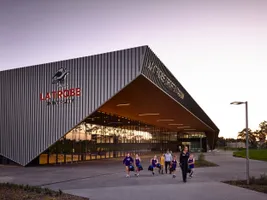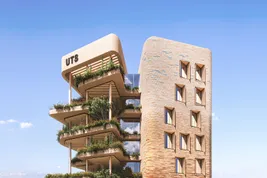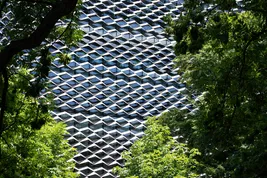Urban activity creating lifelong learning and social, physical, and mental wellbeing
Hiwa - The University of Auckland Recreation Centre
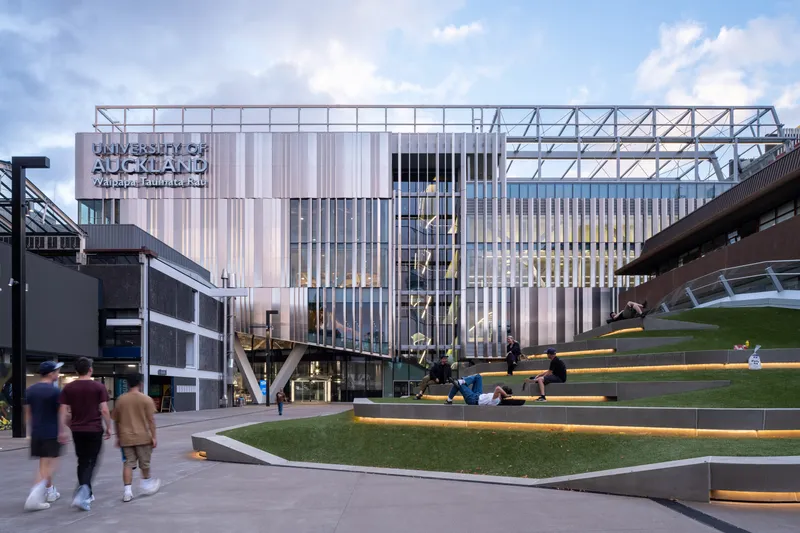
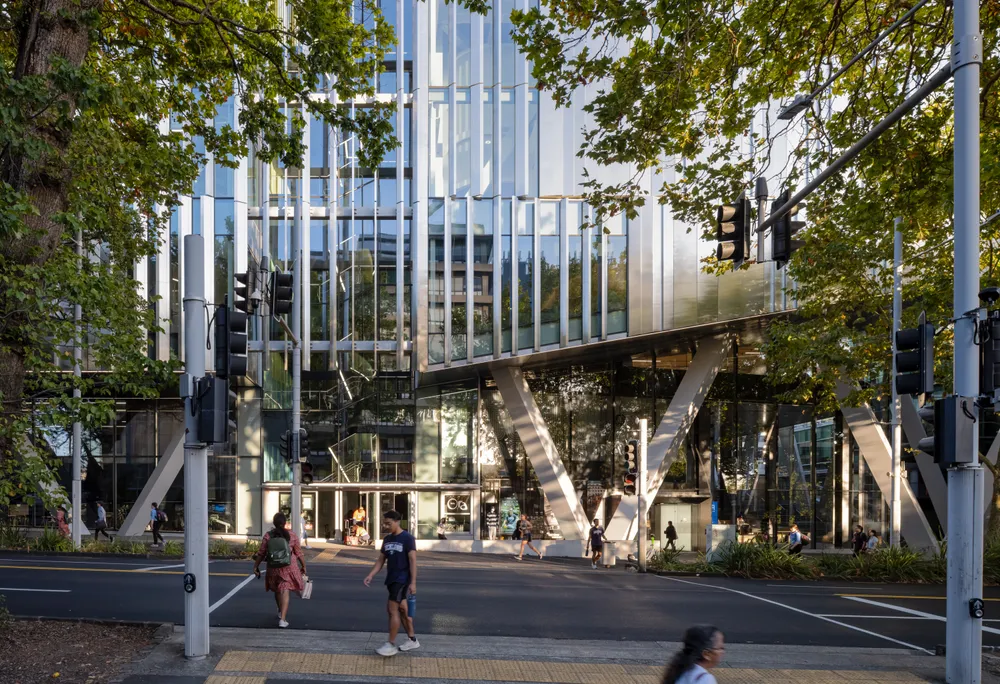
It is fantastic that Hiwa has been recognised internationally at the World Architecture Festival. This award acknowledges the quality of its design and the way the facility supports student wellbeing, clubs, sport, recreation and high-performance programmes. While Hiwa is a world-class recreation facility, it is also much more than that. The building is central to our student experience and is designed to be fully inclusive, supporting the success of everyone who uses it.
Split, stack, alternate
To deliver to this demanding brief and tight urban site, the design team analysed detailed user data to create a well-defined operational logic and a singular clarity to its design. Raising the sports halls and placing the aquatic hall below grade, frees the ground plane to create a seamless connection with a new student plaza that connects interior and exterior, east and west and creates a memorable public space at the heart of the campus.
As one rises from street level to roof running track, a major programme volume occurs at each level. These venues are alternated on either side of a central fitness core in order to optimise user participation and engagement.
There is a lot to be said about Hiwa. It is an exceptional building, and with 500,000 visits in its first few months of opening, it is already transforming the lives of our students and communities and will do so for decades to come. This project was delivered in one of the toughest construction environments, and was delivered in a spirit of collaboration and partnership. This project is the embodiment of what can be delivered with a true partnering approach to construction.

Unifying the student precinct
The University of Auckland is an urban campus that is fully meshed with the life of the city. The campus is carefully planned and densely built to make the most of scarce site areas. The recreation and wellness centre is a large project (approximately 20,000m²) and the brief required that the project must be vertically ‘stacked’ to ensure operational efficiency as well as a physical ‘fit to site’. A sloping site created challenges for accessibility, interconnection, and serviceability.
From the concept to execution, the design intent is so clear. Its innovative spatial configuration and commitment to inclusivity elevate the student experience, making wellbeing a visible, celebrated, and accessible part of daily university life. An enduring asset that the university can be proud of.

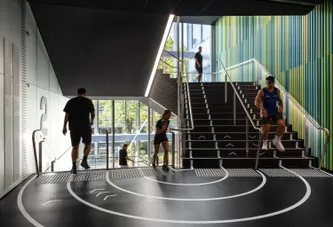
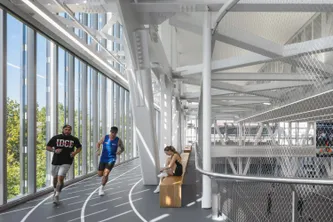
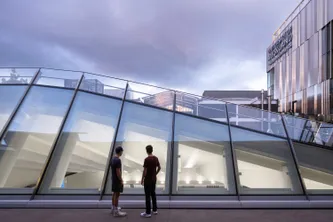
Research from the University of Auckland’s Campus Life team have found a notable link between Hiwa's recreation centre use and academic success. Students who used the facility just once a week saw 19% more A grades than those who didn’t, while those attending three times weekly recorded 30% more A grades. The impact was particularly pronounced for Māori and Pacific students: a single weekly visit correlated with a 24% uplift in A grades for Māori students and a 44% increase for Pacific students. With studies showing 50% of undergraduates report a mental health decline after starting university, spaces like Hiwa matter more than ever.
That sense of success and achievement through sport drives academic performance because it builds a sense of belonging on campus - and that in turn gives you confidence in your study. We’ve pushed the boat out; we’ve challenged ourselves with technology and innovation. Not only will it work well for students today, but it also means we can evolve to meet users’ needs over time. There’ll be a million visits coming through the door easily this year, and that wellbeing impact will be huge.
Thinking fast and slow
The facility maximises opportunities for wellness in all its forms. The roofs of the three recreation volumes are developed as open and active athletic, leisure, and social space – these spaces employ biophilia and connect users to nature. The upper roof offers an outdoor running track, programmable fitness space, and elevated views to Auckland and its majestic harbour.
Students who may not identify with conventional ideas of athletics are welcomed to participate through deliberately integrated social, leisure and outreach spaces at all levels, including a café, therapy, napping pods, soft seating, and touch-down spaces that create gateways to the larger sport spaces throughout the building.
The Hiwa Recreation Centre was a standout among the 100 entries received in this year’s Property Council NZ awards for several reasons. It is truly a world class facility that has transformed the heart of the University and will continue to be pivotal in its global standing as an educational institution.
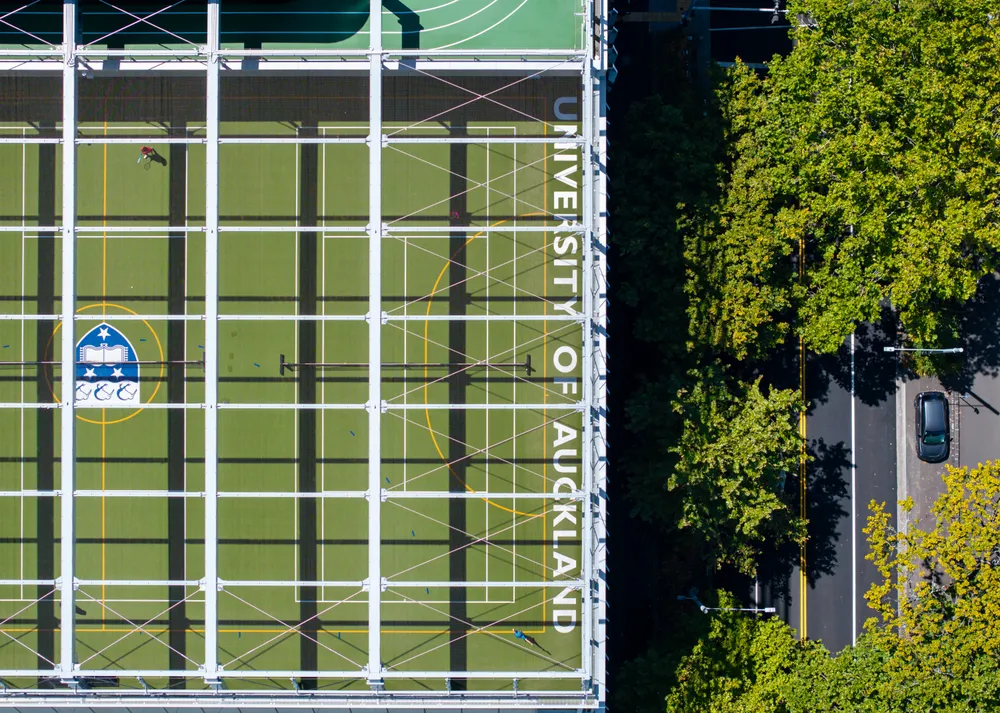
A step up
Vibrant and vertical movement is the building’s fitness and social animator. A key design approach was to reduce the stair count to two, optimising them to deliver multiple functions: a fitness loop, social convener and daylight providers. Advanced smoke evacuation modeling and leading technology fire shutters allows these exits to deliver continuous and interconnected lobby openings for each floor.
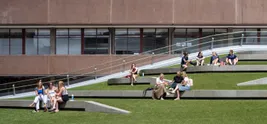
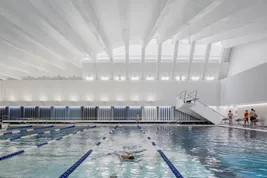
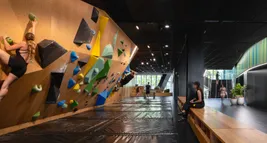
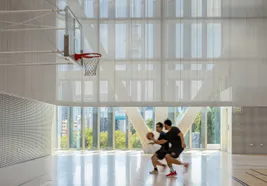
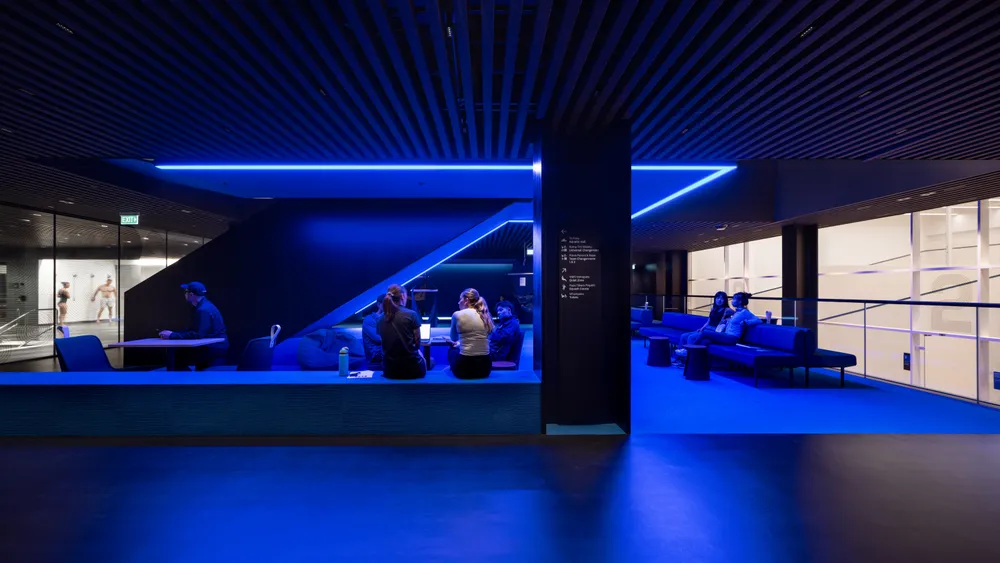
The building is clad with stainless steel panels and matching louvers to unify the mass into a single but punctuated form. The louvres allow shifting views of activity, while ensuring no internal performance glare. Matte stainless steel animates the façade as one moves, capturing reflections of the dramatic Auckland weather. Soft lighting of the 8-storey core delivers a prominent vertical gradient of colour, projecting clear internal circulation and a welcoming urban prominence towards the city.

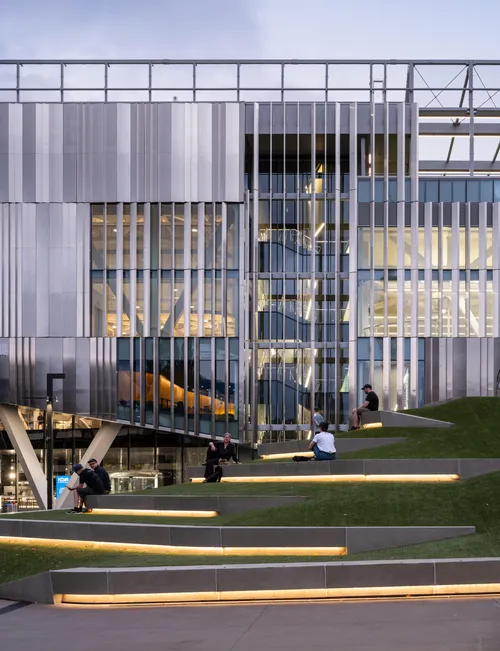
Collective Effort
Collective Effort





